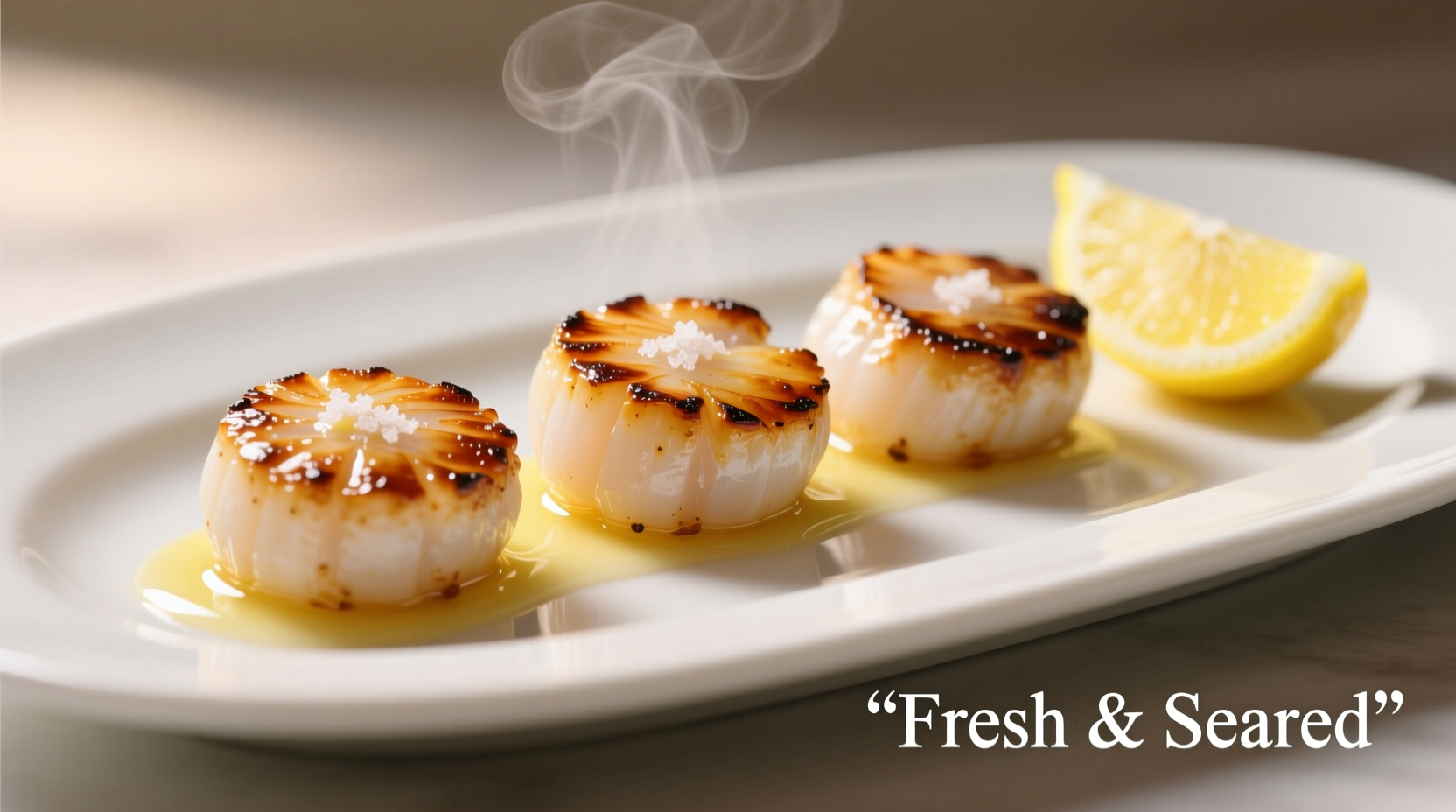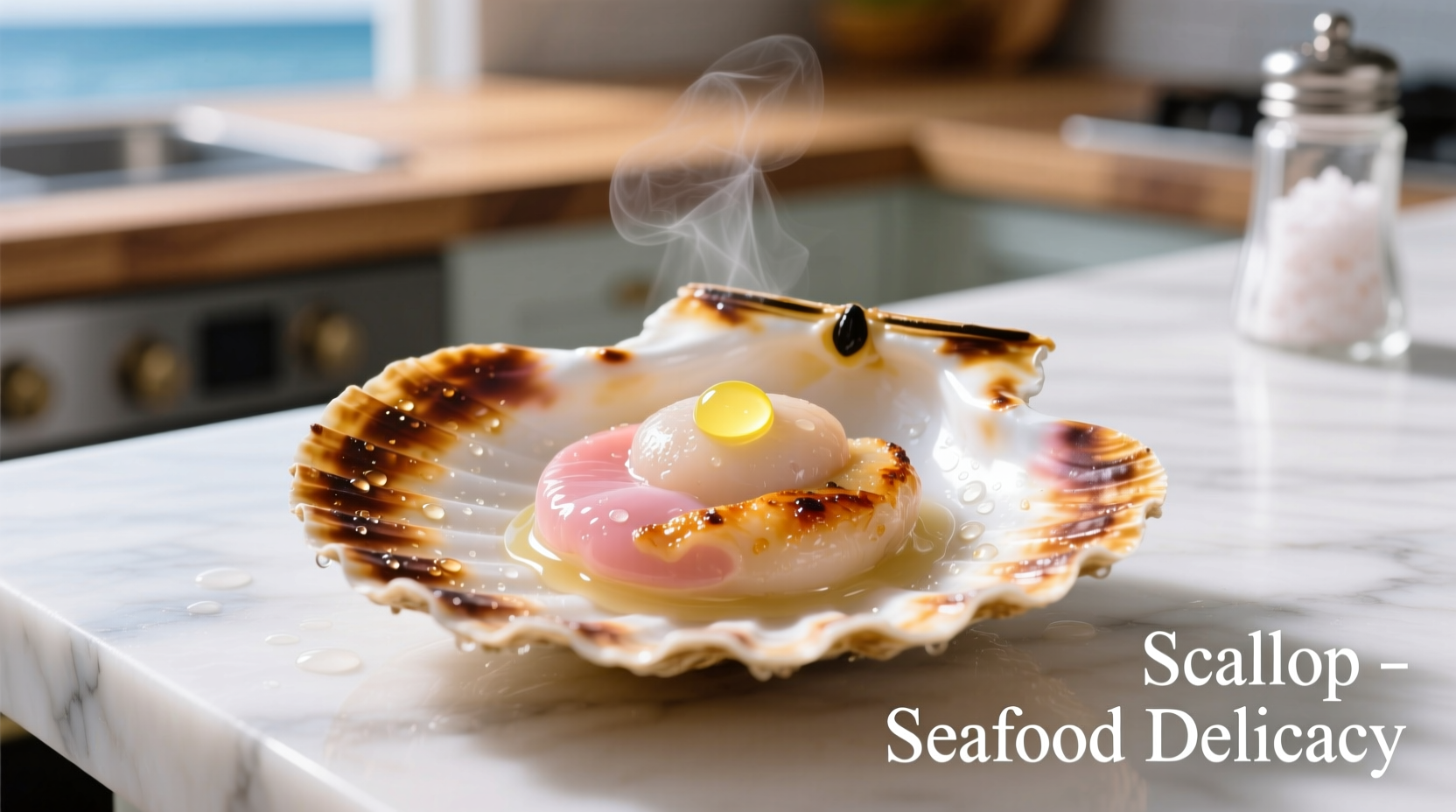Your Complete Guide to Understanding Scallops as Food
When you ask "what is a scallop food," you're seeking clarity about one of the ocean's most elegant edible treasures. Unlike fish, scallops belong to the shellfish family—specifically bivalve mollusks that swim by clapping their shells. The culinary star is their powerful adductor muscle, which contracts to open and close the shell. This muscle transforms from tough ocean anchor to melt-in-your-mouth delicacy when prepared correctly.
What Exactly Are Scallops? Beyond the Basics
Scallops aren't just "seafood"—they're sophisticated filter feeders with unique biology. While most bivalves (like clams) stay buried, scallops swim using jet propulsion. Their prized adductor muscle works like a natural rubber band, making up just 20% of the whole organism. The rest—roe, mantle, and viscera—is typically discarded except in Japanese cuisine where hotate includes coral-colored roe.
| Scallop Type | Size & Texture | Best Cooking Method | Flavor Profile |
|---|---|---|---|
| Sea Scallops | 1.5-2.5" diameter, firm | Searing (90 sec/side) | Sweet, buttery, mild ocean |
| Bay Scallops | 0.5" diameter, delicate | Quick sauté or raw | Intensely sweet, floral |
| "Calico" Scallops | Smallest, often whole | Stir-fries or ceviche | Briny, complex |
This comparison clarifies a critical context boundary: using sea scallops for ceviche causes rubberiness, while bay scallops vanish when grilled. Always match scallop type to cooking method—this separates amateur attempts from chef-quality results.
Wet vs. Dry Scallops: The $10 Mistake You're Making
Understanding this distinction is non-negotiable for perfect scallops. Dry scallops (never treated with chemicals) caramelize beautifully. Wet scallops (soaked in sodium tripolyphosphate) repel heat, steaming instead of searing. The U.S. Food and Drug Administration confirms wet scallops absorb 20-30% more water, diluting flavor and creating soggy disasters.

Nutritional Powerhouse: Why Chefs Love Scallops
Beyond exquisite taste, scallops deliver exceptional nutrition. A 3-ounce serving provides:
- 14g high-quality protein (28% daily value)
- 400mg omega-3s (25% DV for heart health)
- 90% of your daily vitamin B12 needs
- Zero carbohydrates, just 94 calories
Research from the American Heart Association shows regular seafood consumption reduces cardiovascular risk by 36%. Scallops' selenium content also supports thyroid function—making them a functional food, not just a delicacy.
Pro Cooking Secrets: Avoiding Rubberiness
The #1 home cook error? Overcooking. Follow this timeline for restaurant-quality results:
- Prep (5 min): Pat dry with paper towels—moisture is the enemy of sear
- Season (1 min): Light salt only—no pepper until after cooking
- Sear (3 min): 400°F oil, 90 seconds per side until golden crust forms
- Rest (2 min): Carryover cooking finishes the center
Never pierce scallops with forks—use spoons to prevent juice loss. For bay scallops, reduce time to 60 seconds per side. This precise evolution process transforms tough muscle into tender morsels through controlled Maillard reaction.
Where Scallops Come From: Sustainability Matters
Over 80% of U.S. scallops come from Atlantic fisheries managed under NOAA Fisheries quotas. Wild-caught sea scallops are a "Best Choice" per Monterey Bay Aquarium's Seafood Watch due to rotational harvesting that protects ocean floors. Avoid imported "diver scallops" with unclear origins—traceability ensures you're eating ethically sourced seafood.











 浙公网安备
33010002000092号
浙公网安备
33010002000092号 浙B2-20120091-4
浙B2-20120091-4